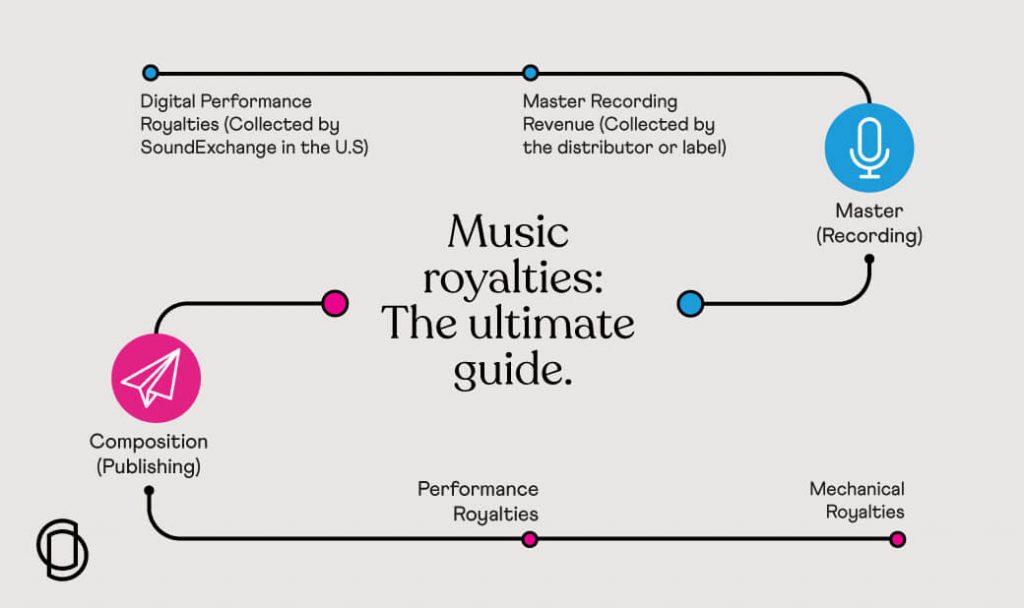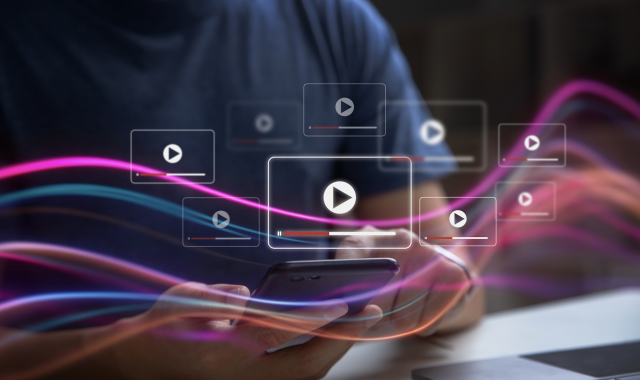Music royalties explained: The ultimate guide
The world of music royalties is quite complex, but understanding how to generate revenues for the use of copyrighted music is essential to stay afloat and grow in this business.
Nowadays, you can find different types of royalties, each associated with a type of copyright.
Read our new guide to learn about the different types of copyrights in music, the royalties they generate, and how to collect them.

Music rights and royalties: The basics
Music royalties are the payments made to rights holders, including songwriters, recording artists, and intermediaries like labels, publishers, or producers for the licensed use of their work.
Royalties are generated depending on the type of usage and licensing.
Before looking at the different types of music royalties, it’s key to understand how music rights work.
For every song recording, there are two different sets of music copyrights associated:
- Master: The rights related to the reproduction and distribution of the sound recording. They belong to the recording artist, the record label and/or the recording studio.
- Composition: The rights based on the lyrics, harmonies, and melodies of a song. They belong to the songwriter and/or the publisher.
Depending on the usage of these two music rights and the country, they can generate different types of royalties.
To make this clear, below, we offer a music royalty breakdown.
Type of music royalties
Music royalties can be divided into different categories. There are various ways music generates royalties. Find out below the two most common ones:
- Master Recording Royalties: Refers to the payment made to recording artists, record labels, and producers whenever the sound recordings of their pieces are streamed, downloaded, or bought physically.
- Neighboring Rights Royalties: Refers to the royalties generated from public performance or broadcasting of sound recordings on non-interactive digital services (internet or satellite radio), terrestrial radio, television, cable music channels, cinemas, public spaces, and businesses. Neighboring Rights Royalties are paid to master recording owners, mainly record labels and performing artists by SoundExchange.
In SonoSuite, we can help you register your sound recordings in SoundExchange and collect potential neighboring rights royalties owed to you.
We also offer the corresponding tools to help you manage your master recording royalties generated from the music you release on the most popular streaming platforms.
Other types of music royalties
- Public Performance Royalties: Refers to the amount paid by Performing Rights Organizations (PROs) to songwriters and publishers whenever their music is broadcasted publicly.
- Mechanical Royalties: Refers to the payment made to songwriters whenever one of their copyrighted musical compositions is distributed or reproduced in both physical and digital formats.
- Digital Performance Royalties: Refers to the charges applied to service providers like Pandora or SiriusXM and webcasters for the use of streaming musical content. The payment is made to artists and rights owners through SoundExchange.
- Synchronization Royalties: Refers to the royalties generated when a copyrighted music composition is shared in a video format or other media like motion pictures, commercials, TV, or video games. These royalties are paid to record labels and recording artists.
How to manage and collect your artists’ royalties using a white-label distribution service?
After a track is streamed and registered, the DSP provides a sales report to the white-label distribution service like SonoSuite, which uploads the data to its platform.
The DSP then pays the royalties to the white-label distribution service. When sales are confirmed, the distributor is notified of the royalties generated each month.
The distributor would need to send the corresponding invoice for confirmation as well.
Once this is done, the end-user or artist will receive the corresponding amount owed in his account.
Keep in mind that the entire process can take up to three or four months.




